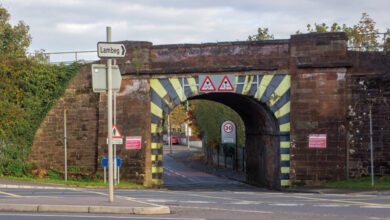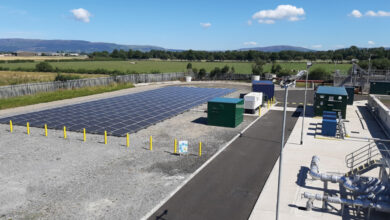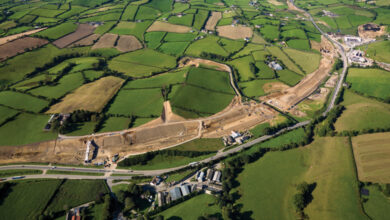Assessing the impact of infrastructure
 The ESRI’s Associate Research Professor Edgar Morgenroth assesses the impact of transport infrastructure on regional development.
The ESRI’s Associate Research Professor Edgar Morgenroth assesses the impact of transport infrastructure on regional development.
For policy makers in peripheral regions one of their biggest desires is the development of transport infrastructure to help their regions overcome their peripherality. There is also a perception that in terms of infrastructure investment, Dublin receives preferential treatment. However as the ESRI’s Associate Research Professor Edgar Morgenroth’s research suggests, neither of these arguments are supported by fact or logic.
Benefits of investment
While it might be easy to assume investment in a region’s infrastructure will lead to benefits, Morgenroth contends that this isn’t a guarantee. Not every piece of infrastructure has the same impact though the evidence from the international literature suggests that investment in roads has the biggest benefit. However, this impact varies across regions and is dependent on their respective development levels. Similarly, the sectoral benefits of transport infrastructure investment varies widely. The agricultural sector benefits least from transport investment while the service sector tends to benefit most from investment in broadband infrastructure.
The effect of such investment is non-linear and Morgenroth’s research shows that at some point, as the transport network develops, further investment doesn’t add any further benefit. “If you already have one developed motorway, you don’t need a second one,” states Morgenroth who also notes the importance of the interrelationships between investment and the fiscal system. “The best benefits are achieved when the tax rates are lowered and the reason for this is that taxes take money out of the private sector and put it somewhere that is not necessarily productive. There is also an argument to suggest that investment is even better if it is funded by fiscal transfers.”
There is also a link between accessibility and population growth with more accessible areas experiencing faster population growth. However Morgenroth notes this quickly leads to an increase in congestion and the need for further transport investment. Focusing on what further investment in Ireland’s road infrastructure could practically achieve, Morgenroth uses the example of Co Donegal and the A5/N2 project. The distance between Dublin and Letterkenny is 240 km and the average drive time is currently 190 minutes if an average speed of 75.8 km/hr is maintained. Morgenroth notes that any potential investor will only consider investing in the development of road infrastructure if a drive time of less than two hours can be achieved. To reach this target between Letterkenny and Dublin would require a driver to maintain an average speed of 120km/hr, something Morgenroth states is not feasible.
“Letterkenny to Belfast is a much shorter distance and would require an average speed of 75km/hr to make it in two hours,” states Morgenroth. “A small improvement in road infrastructure would achieve a journey time of less than two hours so if I was in Donegal I would want a motorway from Derry to Belfast. This motorway would provide residents of the county with access to two international airports and an international port.”
Morgenroth was also keen to note that improving the drive time between point X and point Y also improves the drive time at all intermediate points along the route and this may have a negative impact on the starting location. “To improve the drive time from Letterkenny to Dublin would also improve the drive time from Monaghan to Dublin and the drive time from Monaghan to Dublin will always be less then Letterkenny and that will never be overcome,” states Morgenroth.
“It is also worth considering the negative impact transport infrastructure will have on remote locations. Transport infrastructure works in two ways and examples from around the world show that if you build a bigger road, local businesses that were previously protected and served local markets face competition they can’t compete with as a result of the reduction in transport costs.”
Current transport infrastructure
Addressing the second point of contention that suggest Dublin receives preferential treatment with regards to infrastructure investment, Morgenroth notes that in terms of capital expenditure per capita, there is no evidence to suggest that Dublin is favoured. Looking at investment in road infrastructure, Dublin is at the bottom of the list and the midlands region is at the top. Morgenroth credits this to the creation of motorways across the country. “The motorway network has been created this century and there are gaps in it but it does provide accessibility to a large amount of the country. However, there is still a distinct remoteness in the north-west and the south-west,” he notes.
Similarly, the rail network offers good coverage although the level of service varies widely. Using the example of boarding a train in Dundalk, Morgenroth shows how accessibility and universal service are not synonymous. At Dundalk a passenger is able to get a train to Dublin 13 times a day, yet if they use the station in Drogheda they would have the option of 35 trains per day to Dublin. However, if Westport was their station of choice their choice of travel time would be reduced drastically. “Even though accessibility to the rail network is almost universal, the station’s level of service must be taken into account when accurately assessing coverage,” states Morgenroth. The same can be said of access to airports and harbours, the west of Ireland has good coverage from these services as does the south-west. However, there is a gap in the middle of the country.
While the disparity in regional provision is noticeable, it is worth remembering that the population isn’t distributed evenly across the country. With regards to the rail network, the population of Ireland is within two hours of a railway station and almost 85 per cent of the population can drive to a train station within 30 minutes. Similarly, a very significant proportion of the population are in relative proximity to a motorway junction and very few people are far away from one. “An increase in motorway infrastructure now will actually benefit fewer people and that is one of the considerations investors have when focusing on new infrastructure,” states Morgenroth.
While acknowledging that extensive literature details the positive effect of infrastructure, especially transport infrastructure on national and regional economic development, Morgenroth contends that the effect of this investment varies across regions and sectors and is non-linear. He also notes how the impact of the investment is lowered at higher levels of taxation and is at its greatest if paid funded by a fiscal transfer. “Infrastructure is not the only thing that matters when driving down transport costs,” states Morgenroth. “Regulation also has an impact. In France 57 per cent of transport costs reductions between 1978 and 1998 were due to changes in regulations and had nothing to do with transport infrastructure.”
Ultimately, there has been significant investment in transport infrastructure over the last 40 years but despite this, significant accessibility differences are still present across the country. While investment in infrastructure can make a large difference in terms of accessibility, it cannot overcome peripherality relative to other places. Recognising that investment in transport infrastructure is necessary Morgenroth uses the example of investment in broadband infrastructure to highlight how infrastructure alone is not sufficient to address regional development deficits. “To make use of broadband infrastructure you need human capital with a minimum standard of education. Without that, the investment has no effect. Investment in infrastructure is a necessity but it won’t solve all regional development woes on its own,” he concludes.





